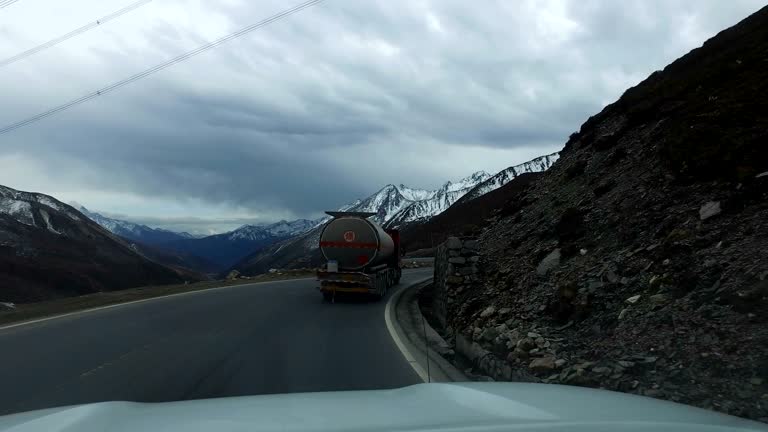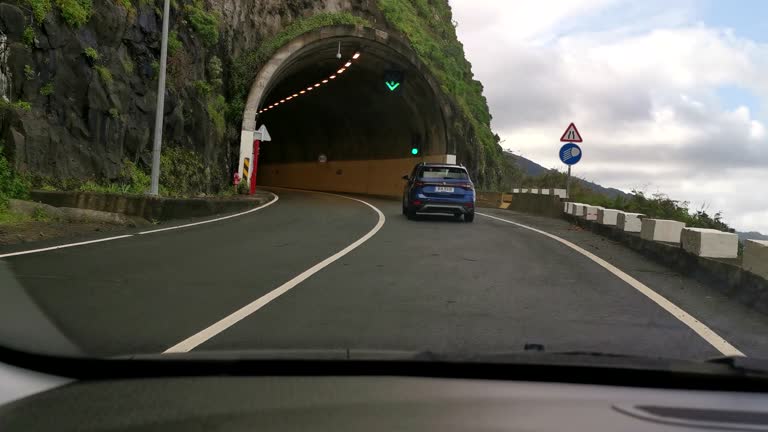How To Properly Brake Down A Steep Hill?
Most beginners need help with driving down a steep hill because when going downhill, gravity becomes a powerful force, putting extra strain on your brakes and increasing the risk of losing control. So how to brake downhill safely? This article will equip you with the necessary skills to conquer any winding descent.
Potential Risks While Driving Downhill

Driving a car going down a hill requires a lot of techniques and challenges but sometimes we do not care, or do it wrong, causing the risk of damaging the car or endangering our lives. Here are some potential risks when driving downhill you may encounter:
- When going downhill faster than desired, we will intuitively brake. The more we brake, the hotter the brake pads get, leading to burning of the pads and loss of braking effect.
- When going down a steep hill, your car goes fast and runs by inertia. The heavier the car, the higher the weight, the faster the speed, the greater the inertia of the car. If running in a higher gear, the inertia of the car when going downhill is greater. Old, worn, poor quality brake pads, or defective pads, can cause the pads to peel off when braking suddenly, causing danger.
- Gravity naturally accelerates your vehicle downhill, making it easier to exceed safe speeds. So it’s important to use your brakes carefully to avoid losing control of your car.
For all these reasons, when going downhill, the driver should minimize the use of brakes or only use them in emergencies. However, If we do not brake, we will lose control, so how to brake safely while traveling downhill?
>> Related post: Hill Driving Lessons For All Drivers
How To Brake Downhill In The Safest Way?
The most important thing to pay attention to when going downhill is braking. Some drivers make the mistake of constantly keeping their foot on the brake pedal generating excessive heat, resulting in the brake overheating or even brake failure. Furthermore, when the brakes are overheated, they will lose their effectiveness, causing unpredictable consequences. That’s why this technique needs to be properly, so when braking, the proper technique is:
- Downshifting on a steep slope is the first and smartest thing to do. Only drive in lower gears. Depending on the type of vehicle, it’s important to use the correct gear to slow down your car. An automatic will deliver less engine braking than a manual transmission, but it all helps. For manual vehicles, you should not drive in 5th or 6th gears, mainly driving in 3rd gear.
- When driving downhill, you should maintain steady pressure on the brake rather than slamming them on suddenly which could cause your wheels to lock up and your car to skid.
- Make sure that your engine RPM is in a range to provide sufficient braking force without over-revving. Don’t be afraid to let the engine RPM get high, it’s built for it. As long as you don’t exceed the redline, it’s perfectly fine.
- Instead of applying the brake constantly, use your brakes intermittently. Brake and get your speed lower than you want/need then release the brakes completely so they can cool before you brake again.
- You should brake to slow down by about 5 to 10 km/h and then release and allow your car to gain the speed back then brake again and then release. You can repeat this process when driving in long and steep grades. You can call this technique “stab braking”. If you’re an off-roader, you will notice that on some steep slopes or mountains, they even have specific areas for drivers to pull over and stop to cool down the brakes.
- Additionally, when driving on steep descents, you can apply the parking brake lightly combined with the foot brake to provide additional braking force.
When driving down a steep slope you need to remember that “brakes to adjust speed, gears to maintain speed”
>> Read more: 5 Tips For Driving On Rough Roads
Take Advantage Of Engine Braking While Riding Downhill

Using engine braking is an effective driving technique, especially when going downhill with an automatic transmission vehicle.
When the vehicle starts to go downhill, it is necessary to shift the transmission to L or S mode. This mode helps the vehicle operate at high engine speeds, thereby helping to slow down the speed. At that time, the engine acts as a brake, helping to reduce the load on the disc brake system and prevent the brake from overheating, then extending the life of the brake and increasing safety.
In addition, engine braking also helps maintain vehicle stability when driving on slippery or rocky roads. This requires the driver to observe and react quickly, especially when weather and road conditions are unfavorable.
Additional Tips for Safe Downhill Driving
Vehicle check
- Checking the brake system is the most necessary thing to be able to control the vehicle’s speed accurately. In addition, the steering system and tires also need to be checked to ensure that they are in good condition, ensuring smooth and safe vehicle control on steep roads.
- Check tire pressure and tread depth. Properly inflated tires with sufficient tread provide better grip and braking performance.
- There are usually very few fuel stations on the mountain pass, so before driving, the driver needs to check whether the vehicle has enough fuel or not.
Pay attention to danger signs
When driving, drivers need to pay special attention to danger signs on the road. This helps to proactively control unexpected situations that may occur, calmly handle them, and ensure safety for the journey.
Watch more:
Observing and reacting quickly
Observation and flexible reaction are two essential driving skills, especially important when going downhill. Drivers need to always keep a long and wide vision, and carefully observe all movements in front and around the vehicle to promptly handle unexpected situations.
When going downhill, early detection of obstacles, potholes, or sudden changes in traffic can help drivers make accurate decisions, thereby adjusting speed or route safely.
Flexible response does not stop at controlling speed and direction. Drivers need to be ready to change driving plans according to weather conditions, road conditions, and other unexpected factors. This requires the driver to have experience and sensitivity to properly assess the situation and make appropriate responses.
Like any driving skill, mastering downhill braking takes practice. Find a safe, controlled environment to practice these techniques before tackling challenging descents. By following these guidelines, you can confidently navigate those winding roads and enjoy a safe and enjoyable driving experience.
We hope that the article will be somehow useful for you! If you have any concerns about braking downhill, let us know in the comment section below!














